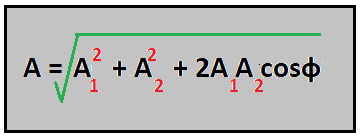Progressive waves(Mechanical)
Introduction : We are well aware of wave and types of wave i.e electromagnetic and mechanical wave. This mechanical wave are the wave which require material medium for it's propagation. In this topic we are going to see different types of progressive waves and their properties.
Definition :Wave which travel continuously in a same direction in a given medium without change of form is called as progressive wave. There are two types of progressive wave viz.
Perform this interesting experiment by your own
Please wait loading........
A) Transverse wave : wave in which the direction of vibration of particles of the medium is perpendicular to the direction of propagation of the wave is called as transverse wave. Eg: ripples on water surface.
 |
| Transverse wave |
Properties of Transverse wave :
1) All particles of the medium vibrate in a direction perpendicular
to the direction of propagation of the wave
with same period and amplitude.
2) When transverse wave passes through
a medium, the medium is divided
into alternate crests and troughs .
3) Crests and troughs advance in the
medium and are responsible for transfer of
energy.
4) Transverse waves can travel through solids
and on surfaces of liquids only. They can
not travel through liquids and gases.
5) When transverse waves advance through a
medium there is no change in the pressure
and density at any point of medium,
however shape changes periodically.
6) If vibrations of all the particles along the
path of a wave are constrained to be in
a single plane, then the wave is called
polarised wave. Transverse wave can be
polarised.
7) Medium conveying a transverse wave
must possess elasticity of shape.
B) Longitudinal wave: wave in which the direction of vibration of particles of the medium is parallel to the direction of propagation of the wave is called as longitudinal wave.
 |
| Longitudinal wave |
Properties of Longitudinal wave :
1) All the particles of medium vibrate in a direction parallel
to the direction of propagation of wave
with same period and amplitude.
2) When longitudinal wave passes through
a medium, the medium is divided into
regions of alternate compressions and
rarefactions.
3) A compression and adjacent rarefaction
form one cycle of longitudinal wave. The
distance measured along the wave between
any two consecutive points having the
same phase is the wavelength of wave.
4) For propagation of longitudinal waves,
the medium should possess the property
of elasticity of volume. Thus longitudinal
waves can travel through solids. liquids
and gases. Longitudinal wave can not
travel through vacuum or free space.
5) The compression and rarefaction advance
in the medium and are responsible for
transfer of energy.
6) When longitudinal wave advances through
a medium there are periodic variations
in pressure and density along the path of
wave and also with time.
7) Longitudinal waves can not be polarised,
as the direction of vibration of particles
and direction of propagation of wave are
same or parallel.








































